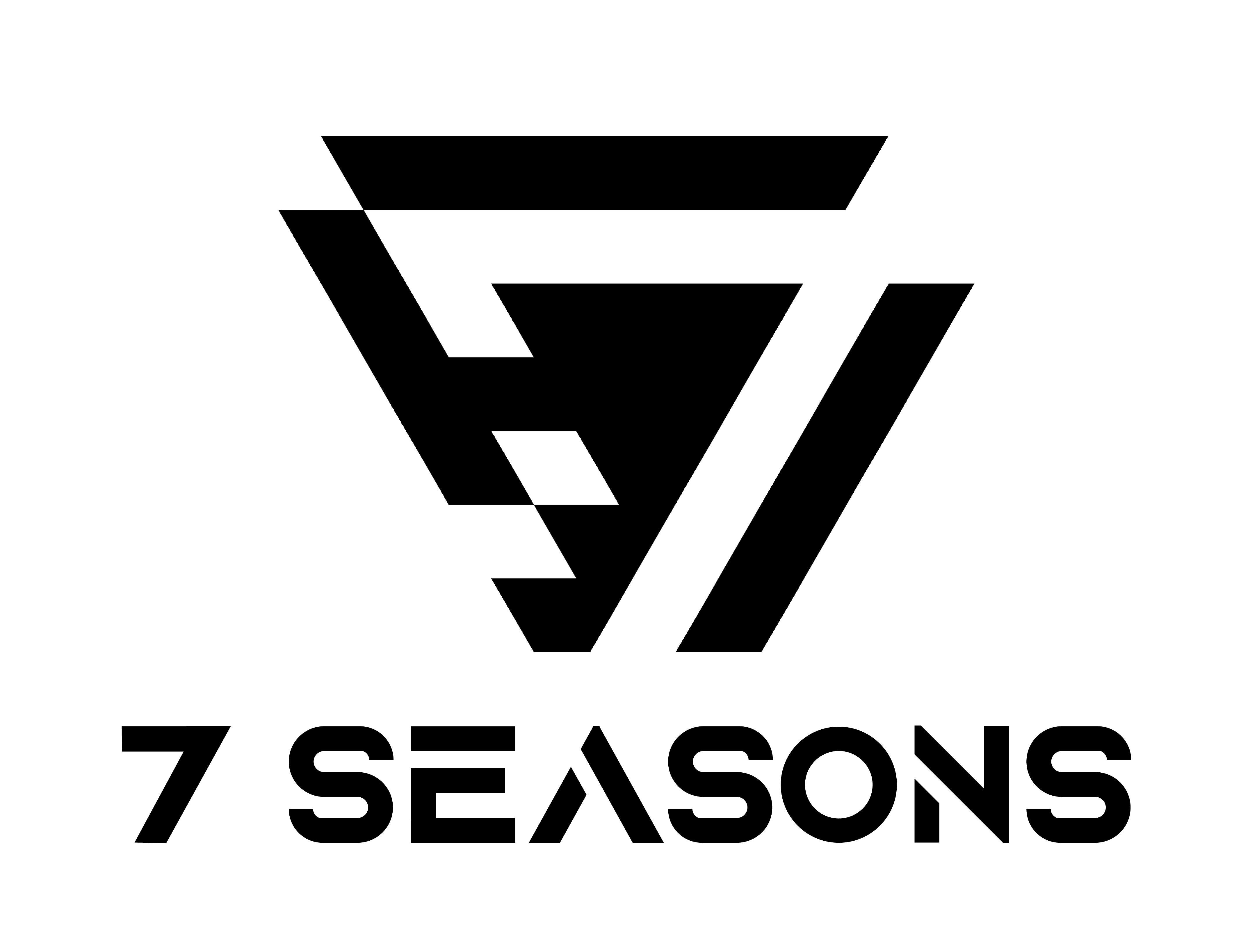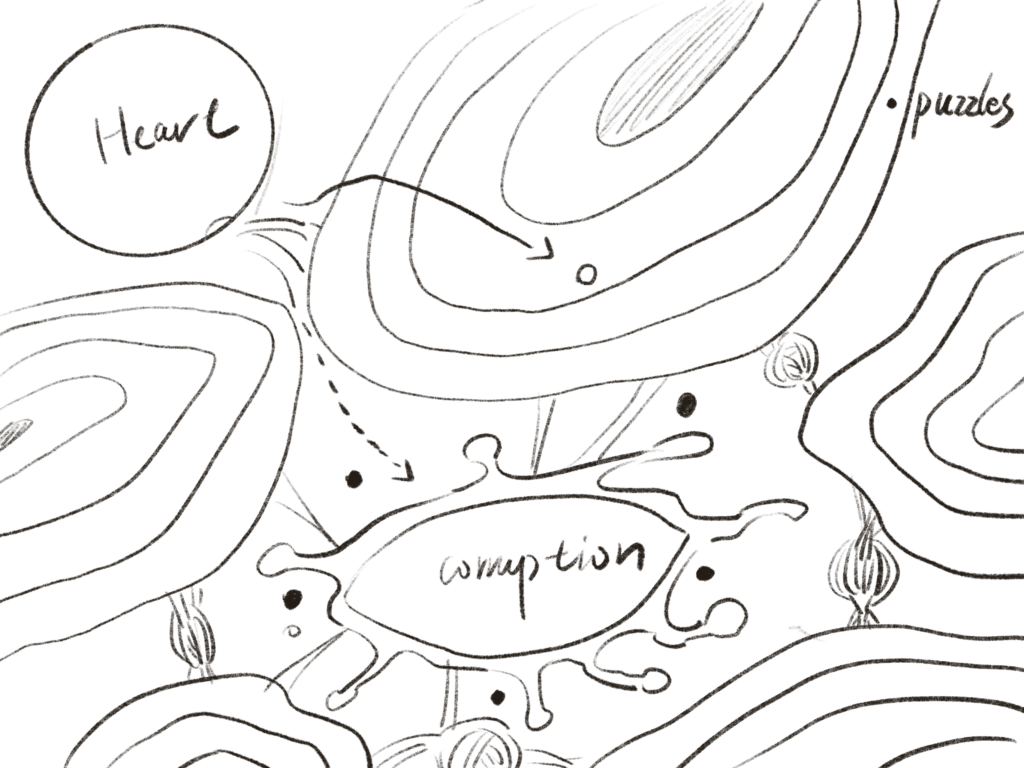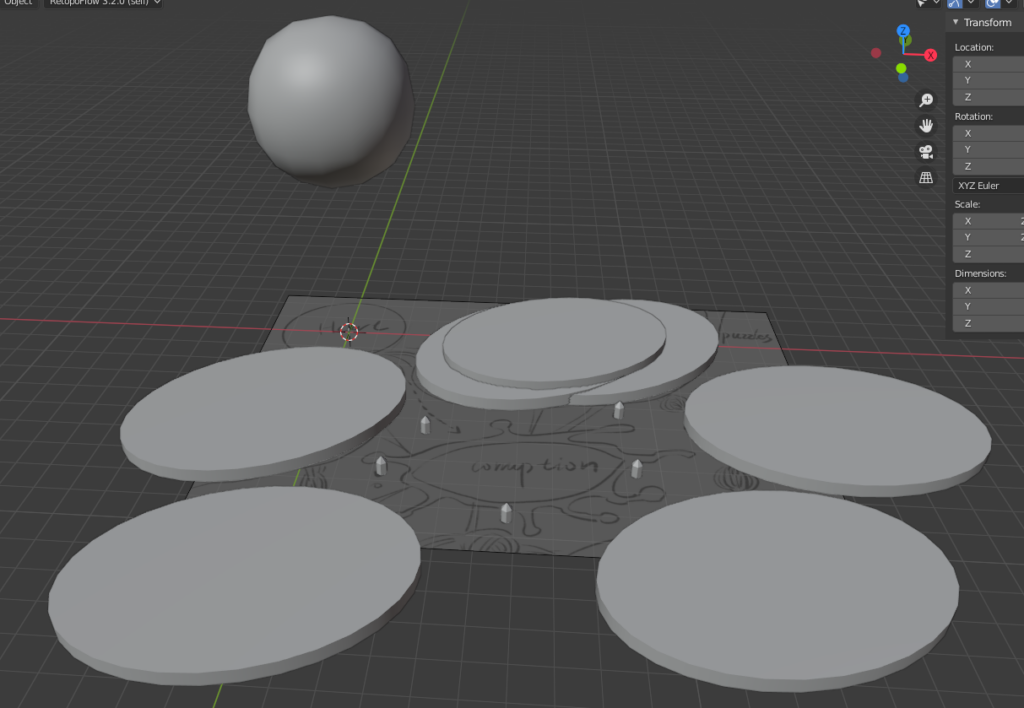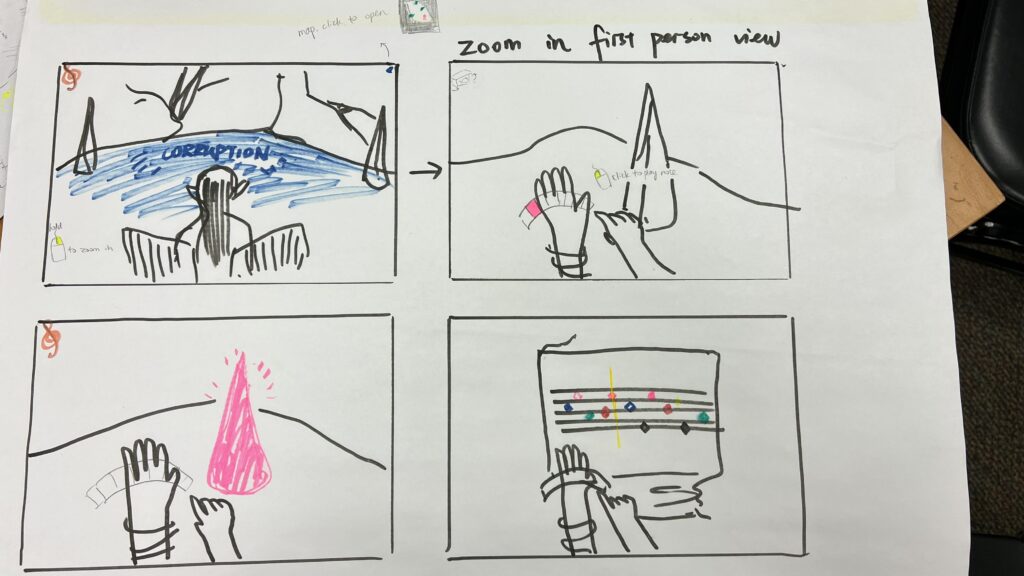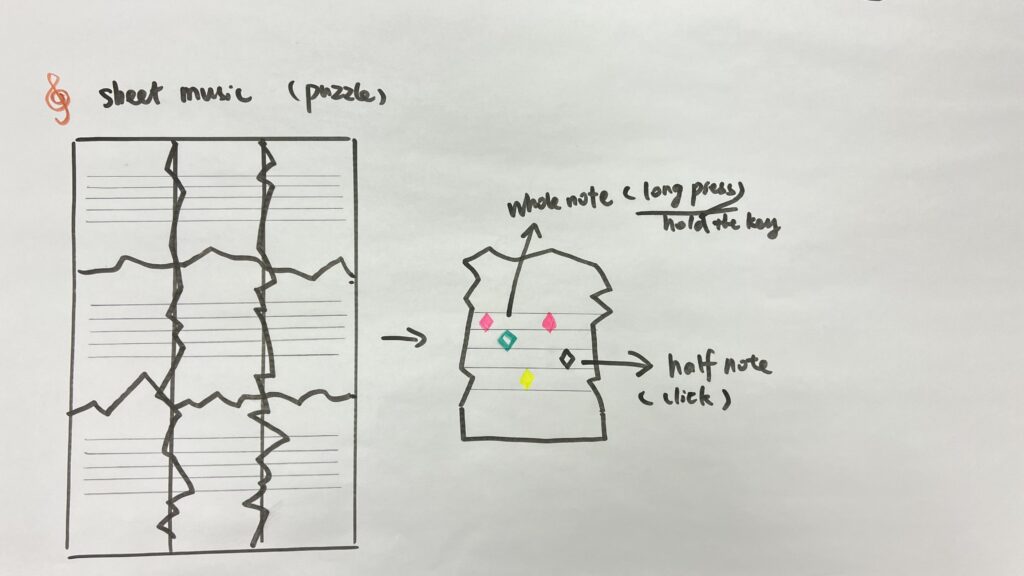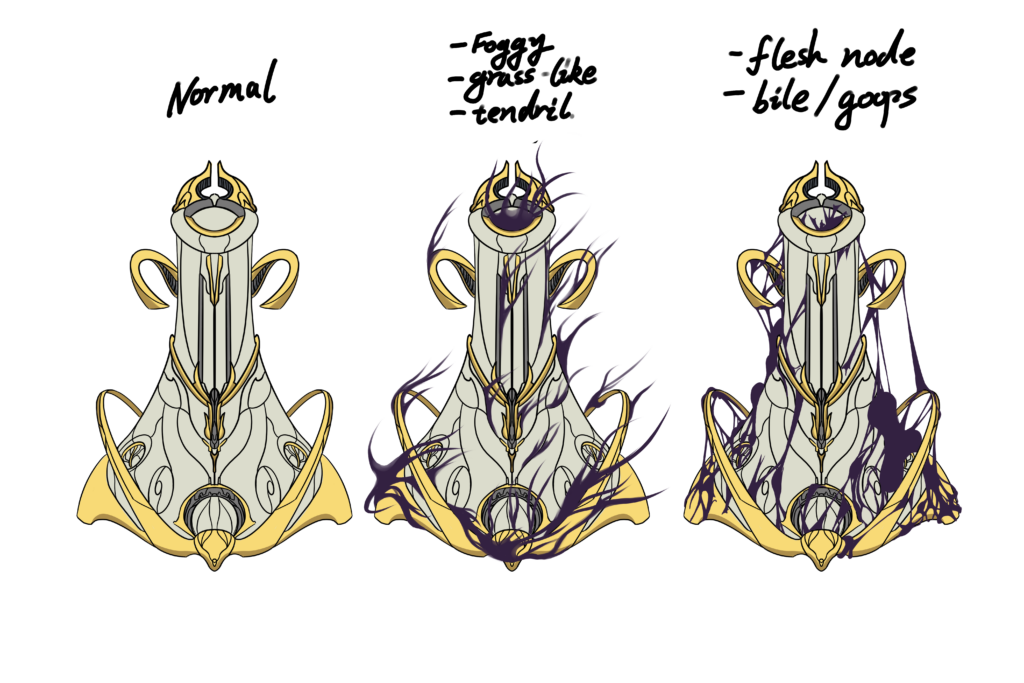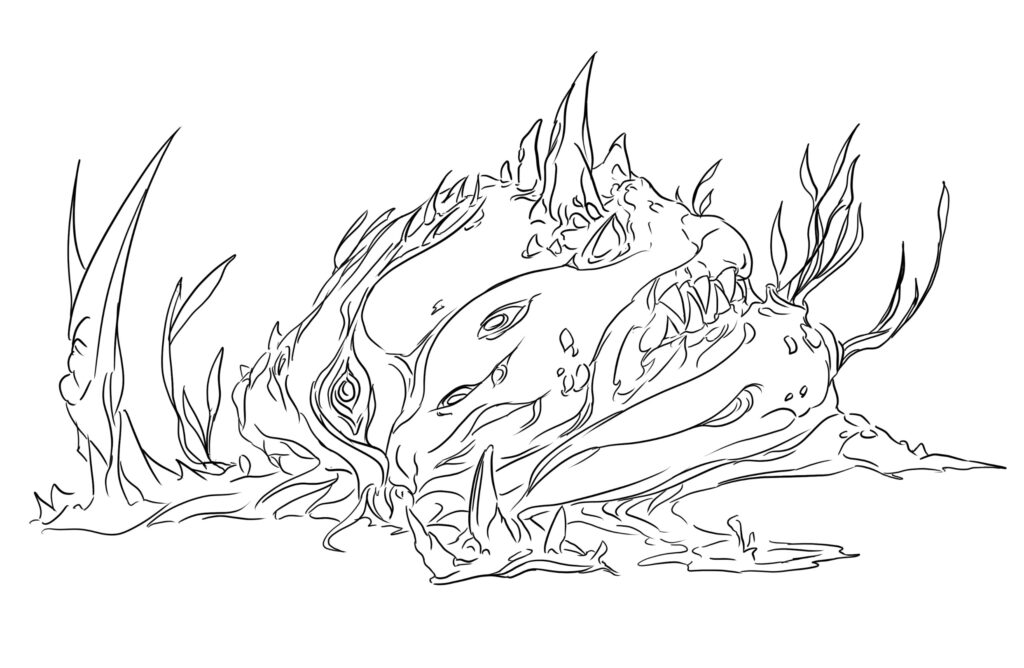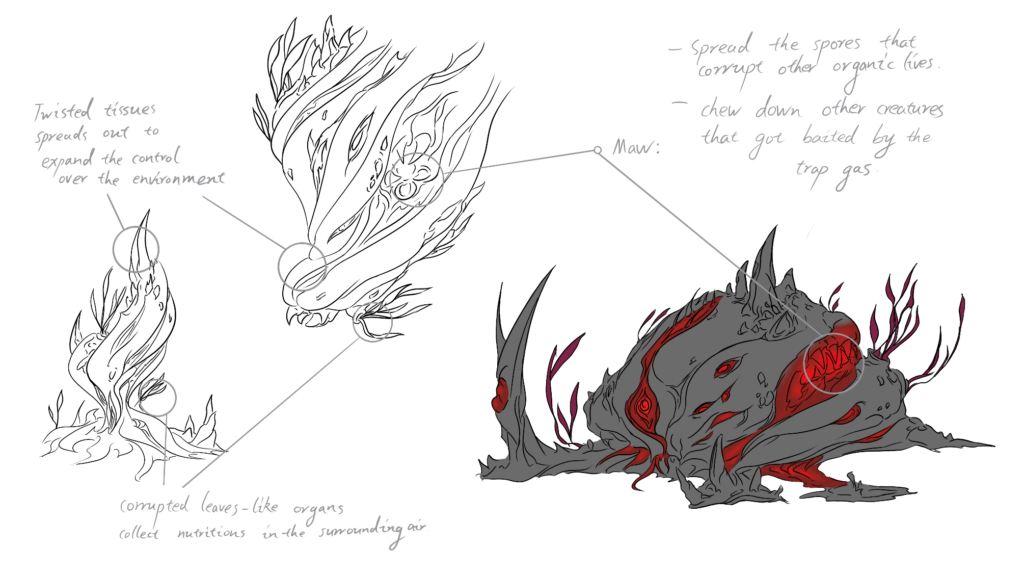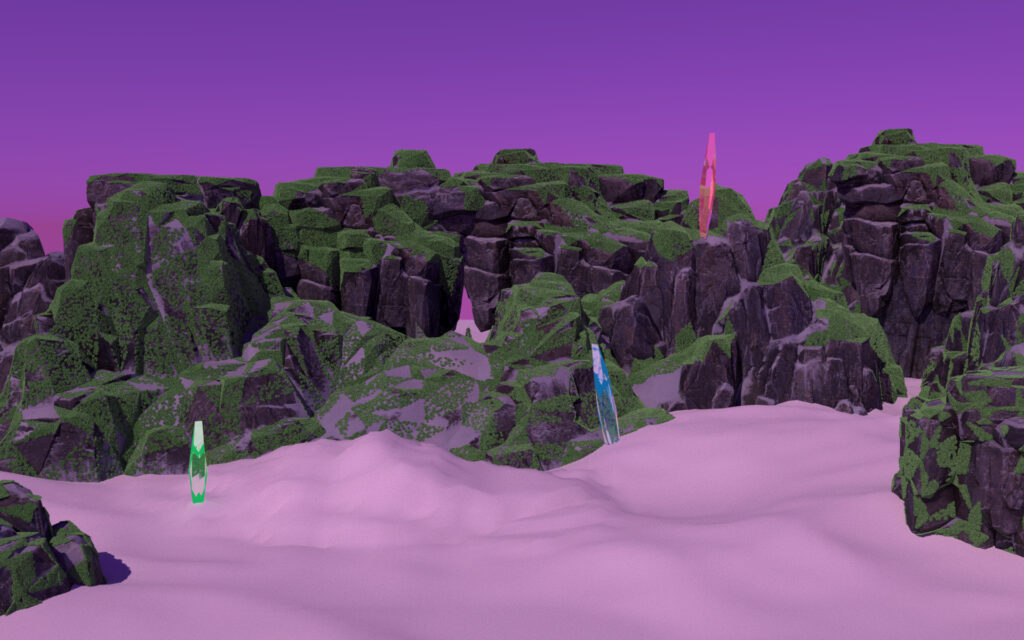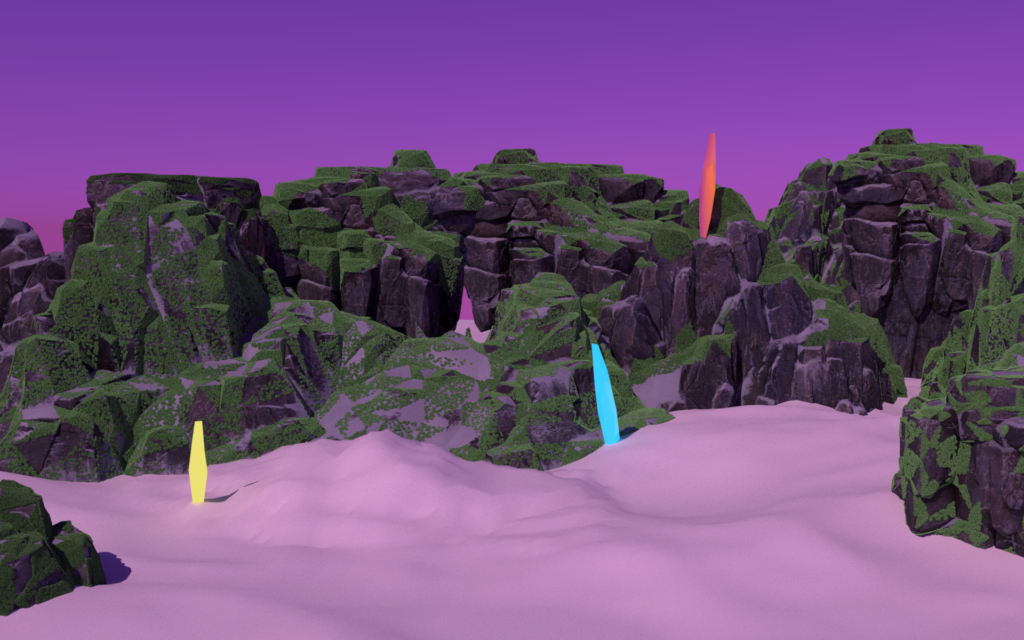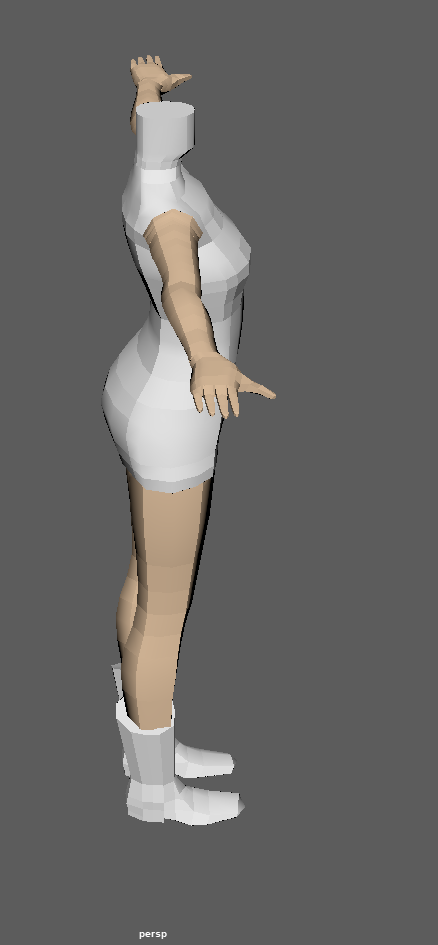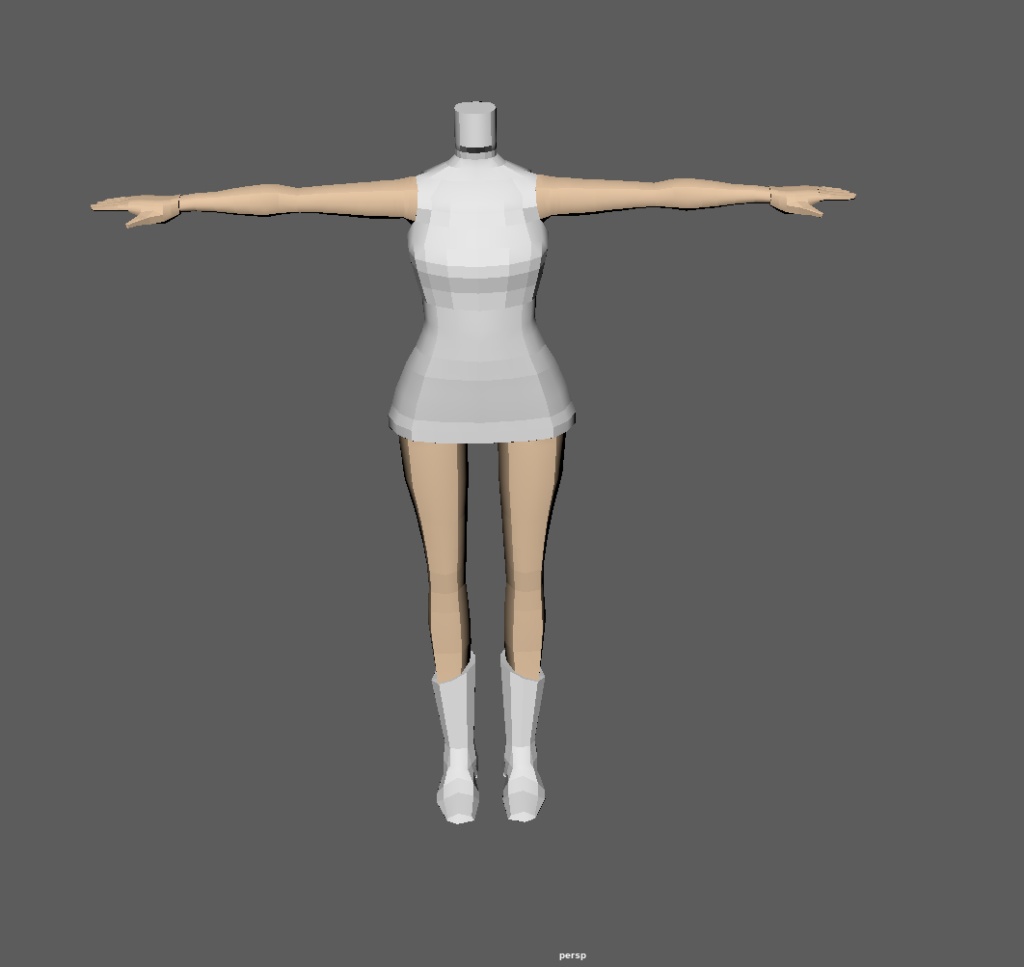Moving into week 9, both the team as well as the faculty felt good about the team’s direction and response coming out of Halves and week 8. That is to say that week 9 would largely be going through the creative grind.
Design
Week 9 is when the team started working on one of the final deliverables – the pitch deck. As of the current state, most everything that needed to be in the pitch deck had been generated. Putting the components in the form of a pitch would help direct which details needed to be further elaborated on in order to convey our game concept clearly.
While Lochlan Belford begun organizing the pitch and clarifying, Damian Xie and Justin Yook delved into level design. Damian took charge of drafting the initial top-down level design, while Justin would make the 3D whitebox of the space.
Meanwhile, in the process of talking through the moment of interaction with Yifan, Lochlan and Yifan generated sketches that would help visualize what these moments of interaction would actually look like from the player perspective.
The week culminated with giving the pitch to Bob Bates, a veteran game designer with experience in adventure games. Bob said the game concept was very cohesive, but also provided helpful criticism about how the gameplay could be more compelling. Most notable was Bob’s feedback on the main puzzle mechanics, based on his copious experience designing puzzles. In particular, he expressed that solving a puzzle has to give the player a satisfying eureka moment, and that it has to be equally satisfying whether the player is able to solve a puzzle in 30 seconds or 5 minutes. He also pointed out that, in a puzzle game, the player spends most of their time doing the “wrong” thing while in search of the puzzle solution. It is the job of the puzzle designers to make doing the wrong things fun for the player, and to make sure that these wrong things still provide clues that eventually lead the player to the solution. At the end of the meeting, Bob also sent the design team resources to further guide the design, including a chapter from his book about puzzles, and a recording of a music-themed adventure game called Loom with similarities to our concept.
Art
In the space of 2D concept art, Harry continued to flesh out concepts such as the interaction with corruption on the points of interaction and with the world in general.
Meanwhile, Yifan generated renderings of the supposed 3D environment in addition to the crystals that would react to player song.
Finally, Joy wrapped up on details on the character design sheet and moved into the 3D modeling of the main character.

